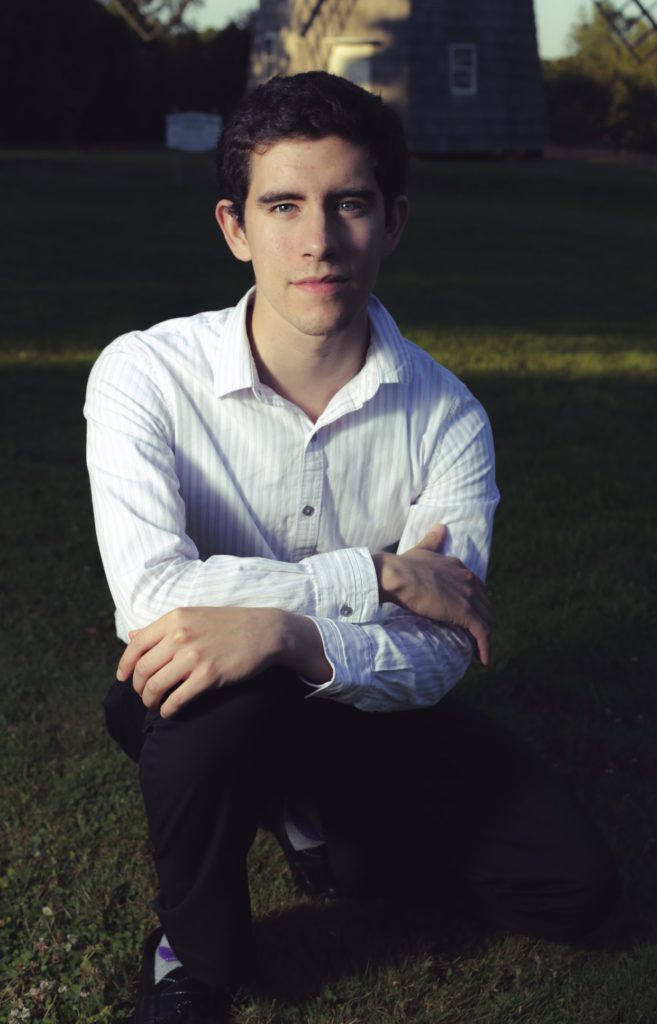Review of “Spanning the Centuries
with Michael Delfin, Harpsichordist”
and “Lecture/Demo:
Rhetoric in the Inventions and Sinfonias of J.S. Bach”
A Live Event
Saturday, April 30, 2022 at 2pm, The Episcopal Parish of St. John the Baptist
at Oregon Episcopal School, Portland Oregon
Available Online
Premiere Saturday, May 7, 2022 at 2pm on the WEKA YouTube Channel
Reviewed by Carol lei Breckenridge
The Program
Michael Delfin’s “Spanning the Centuries” April 30 harpsichord recital was indeed stellar and well received by the audience at the Episcopal Parish of St. John the Baptist, Portland Oregon. Delfin’s playing was masterful, expressive and dramatic. His technique was impeccable throughout, and at the service of the musical requirements of each composition and style. The double manual harpsichord was built by Owen Daly in 1984, after Jean-Claude Goujon of Paris, pre-1749. It had a sweet, elegant and sustained tone, adding much to the listener’s enjoyment of the varied repertoire.
The concert’s first half began with the neatly rendered William Byrd’s Fantasia from the Fitzwilliam Virginal Book, No. 103. This was followed by three movements from François Couperin’s Troisième Ordre — Allemande: La Ténébreuse, Premiere Courante, and Sarabande: La Lugubre. In each movement, Delfin brought out rhythmic and harmonic nuance within an ongoing steady pulse, and particularly in La Ténébreuse and La Lugubre spun a web of tonal beauty through sustained harmonies, creating an elegant, hypnotic effect.
It was in the Ukrainian composition by Dmytro Bortniansky (1751-1825) that Delfin’s sensitive touch was most eloquently revealed. He played the Andante from Sonata in C Major, a work of Classically-oriented simplicity, having a beautiful melody with simple accompaniment. Delfin masterfully brought out the subtle dynamics needed for the melody, including “sighs” and rhythmic flexibility as needed to create the cantabile lines.
The last work before intermission, Variatsioonid (2007) by contemporary Estonian composer Rein Rannap (1953 -), was a fascinating and thrilling mirage of varied stylistic effects, including ostinato rhythms, bits of Slavic melodic phrases, tapping on bass strings, and sections of utter fantasy and flurry.
Following intermission, we were treated to three toccatas, beginning with Claudio Merulo’s Toccata prima sopra Undecimo detto Quinto Tuono of 1604. Delfin brought out separate textures of choral and instrumental ensemble, along with great sweeps of keyboard runs.
J.S. Bach’s early Toccata in D Major, BWV 912, was a true highlight of the program. It seemed to this reviewer that Delfin has completely assimiliated this style. The first section contained dramatic silences and contrasting touches; section two’s Adagio revealed both expressive and dramatic moments; and the final fugal section rendered perfectly formed phrases, with subtle stretches at important harmonic moments and phrase endings.
The final work, French-Lebanese composer Naji Hakim’s Shasta (1986), commissioned by the Aliénor Harpsichord Composition Competition, consists of a “ballet” in five varied movements. The Rondo, an exciting, percussive piece, was played with flair and drama, along with Delfin’s impeccable accuracy. The Aria had a meditative atmosphere, enhanced by the sweetness of the harpsichord’s tone. Delfin’s rendition of the Capriccio brought out playful pauses and unexpected contrasts. For the Recitativo, the lute stop was used, creating a gentle plucking effect. The final Toccata returned to the first movement’s exciting, percussive, syncopated style, and rapid arpeggios that were so evenly played that they sounded like strumming.
Michael Delfin is an emerging harpsichordist of the first order, one who is capable of making the harpsichord sing, dance, and create expressive dynamic nuance through judicious use of articulation, timing, and control of tone. For those who missed the recital, the video is available on WEKA’s YouTube channel.
Lecture/Demo
Following the recital, Delfin gave an excellent lecture on rhetorical figures in the Inventions and Sinfonias of J.S. Bach. A handout explaining each of the rhetorical musical figures was passed out, and was projected on screen. For those who missed this lecture, containing important information about compositional devices used in the German High Baroque (and earlier), it may also be viewed on WEKA’s YouTube channel.
Printer Friendly Handout for the Lecture/Demo
About Michael Delfin
Praised for “beautiful performances of great warmth” (Classical Voice of North Carolina), Michael Delfín captures the listener with sensitivity and flair as a versatile performer on both historical keyboards and the modern piano. Delfín was recently nominated to the Diapason 20 Under 30 Class of 2021, shortly before winning the top prize ex aequo in the Ninth Jurow International Harpsichord Competition (August 2021). He is a recipient of the Bourbon Baroque Nicolas Fortin Scholarship, the Historical Keyboard Society of North America Bechtel/Clinkscale Scholarship and the Catacoustic Consort Early Music Grant. He has performed for several HKSNA conferences and has given lectures on historical performance topics for Music America, HKSNA, and the Case Western Reserve University Music Department. Delfín is the artistic director and co-founder of Seven Hills Baroque and harpsichordist for the Bach Ensemble of St. Thomas, both based in Cincinnati. He holds degrees in piano from the San Francisco and Peabody Conservatories, as well as history at Johns Hopkins University, and is pursuing graduate studies in harpsichord and piano at the University of Cincinnati College-Conservatory of Music. See www.michaeldelfin.com
